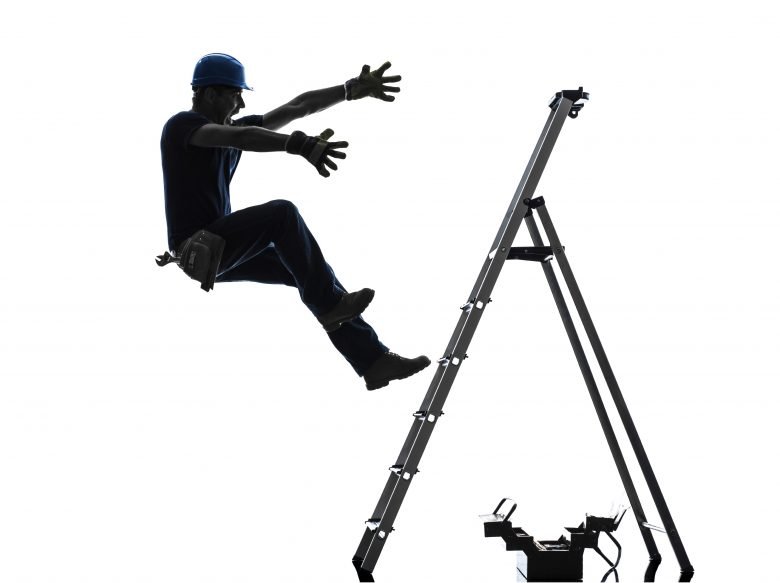
Ladders are essential tools in many industries, from construction to maintenance and warehousing. However, working from heights presents significant risks, including the potential for falls that could result in serious injury or death. One of the most common questions regarding ladder safety is when fall protection is required on a ladder. Understanding the circumstances under which fall protection is mandated and how to implement it effectively is critical for ensuring worker safety.
This article delves into when fall protection is required on a ladder, the guidelines set by regulatory bodies, and practical tips for improving ladder safety. By following these recommendations, businesses can reduce workplace accidents and ensure that workers are better protected when working at heights.
Understanding Ladder Safety Regulations
Before diving into specific situations when fall protection is necessary, it’s important to understand the general ladder safety guidelines as established by regulatory agencies like the Occupational Safety and Health Administration (OSHA) in the United States, as well as international standards such as the ISO and ANSI.
OSHA Regulations for Ladder Safety
OSHA’s regulations for ladder safety can be found in 29 CFR 1926.1053. These regulations cover the selection, maintenance, and use of ladders in construction settings. While ladders are often considered a simple means of access, OSHA recognizes the significant dangers that arise when workers use ladders improperly or without proper fall protection.
In most cases, OSHA guidelines emphasize that employers must ensure that workers use ladders safely and in compliance with regulations. However, OSHA does not always require fall protection when workers are on a ladder. In fact, OSHA’s 1926.1053(b)(1) regulation states that fall protection is not required when a worker is using a ladder, as long as the ladder is properly positioned and maintained.
When Is Fall Protection Required?
Although OSHA does not require fall protection in all situations involving ladder use, there are specific cases when fall protection is indeed necessary. Below are key scenarios when fall protection is required while using a ladder:
1. When Working at Heights Greater than 6 Feet in Construction Sites
According to OSHA Regulation 1926.501(b)(1), fall protection is required when a worker is exposed to a fall hazard of 6 feet or more in the construction industry. If a worker is using a ladder to access a height of 6 feet or more, the employer must implement measures to prevent falls.
However, it’s important to note that ladders alone do not typically offer adequate fall protection. In situations where fall protection is required, it’s generally necessary to use personal fall arrest systems (PFAS) or fall restraint systems, particularly when accessing platforms or other elevated work surfaces.
For instance, when workers are climbing or working from an extension ladder that reaches heights above 6 feet, a fall arrest system (e.g., a harness and lanyard) may be required to prevent falls if the worker is at risk of losing balance or footing.
2. When Using Ladders Near the Edge of Elevated Work Surfaces

If a ladder is placed near an elevated edge (e.g., near a roof edge, a scaffold, or any other elevated platform), fall protection may be required. OSHA Regulation 1926.501(b)(13) states that when workers are working near unprotected edges of elevated surfaces, fall protection is mandatory.
In these cases, workers must wear appropriate fall protection, such as a harness and lanyard connected to a secure anchor point, to prevent accidental falls. Ladders placed near unprotected edges can pose a higher risk since workers may easily lose their balance while ascending or descending.
3. When Working from a Ladder for Extended Periods of Time
Although short-term use of ladders may not require fall protection, prolonged or repetitive work at height can increase the likelihood of accidents. If workers are using a ladder for extended periods, or if the ladder is being used as a workstation, additional fall protection may be needed.
A worker may need to use personal fall arrest systems or ladder safety systems if their duties require them to be on the ladder for longer durations, or if they are in danger of falling from the ladder while performing tasks at height. This includes working on extension ladders, step ladders, or even fixed ladders when workers are required to perform tasks such as installing equipment, cleaning, or conducting inspections.
4. When Using Ladders on Sloped or Uneven Surfaces
Working on sloped, uneven, or unstable ground presents additional risks for ladder users. Ladders placed on surfaces that are not level or secure may cause the worker to lose balance or fall. OSHA recommends that ladders be placed on stable, level surfaces whenever possible. However, if workers need to use a ladder on uneven ground, fall protection may be required.
Workers in these situations should use ladder stabilizers, leveling devices, or a fall arrest system (such as a harness) to minimize the risk of slipping or falling.
5. When Climbing Fixed Ladders Above 24 Feet
For ladders that are used to access fixed structures such as silos, tanks, or tall buildings, fall protection is required when workers are ascending or descending a fixed ladder above 24 feet. OSHA’s regulation 1926.1053(b)(1) mandates that workers using a fixed ladder more than 24 feet above the ground must have some form of fall protection in place.
In these cases, a fall arrest system, ladder climbing safety system, or guardrails must be used to ensure that workers are protected during ascent and descent. Additionally, personal fall protection equipment must be inspected and properly maintained.
6. When Working in Hazardous Conditions (e.g., High Winds, Rain)
Ladder use is also regulated by environmental conditions. If weather conditions make ladder use particularly hazardous, fall protection is often required. For example, working in high winds, rain, or snow can make it difficult to maintain balance on a ladder. In these scenarios, workers should be provided with additional fall protection, such as a fall arrest harness or other fall protection devices.
Employers must assess the weather conditions and the stability of the ladder to ensure that safety measures are in place. If working in hazardous conditions is unavoidable, additional measures like securing the ladder or using a climbing fall protection system should be implemented.
Best Practices for Ladder Safety and Fall Protection

In addition to knowing when fall protection is required, it’s essential to follow best practices for ladder safety to minimize the risk of accidents. Below are some effective safety measures:
1. Proper Ladder Selection
Ensure that the ladder being used is appropriate for the job. For example, if you need to reach a height of more than 6 feet, use an extension ladder with proper weight capacity.
2. Inspect the Ladder Before Use
Always inspect the ladder for damage or wear. Ensure that it is clean and free of debris, and check for defects such as bent rungs, loose parts, or weak spots.
3. Use Three Points of Contact
When climbing a ladder, always maintain three points of contact (two hands and one foot, or two feet and one hand) to reduce the risk of losing balance.
4. Ensure Proper Ladder Placement
Place the ladder on a stable, level surface. Avoid using a ladder on slippery or uneven ground unless additional safety measures are in place.
5. Use Personal Fall Arrest Systems
For jobs that require working from heights, consider using a fall arrest system to minimize the risk of falls. Ensure that all fall protection equipment is properly fitted and maintained.
Conclusion
Understanding when fall protection is required on a ladder is essential for workplace safety. While fall protection may not always be mandatory, there are many scenarios—such as working at heights greater than 6 feet, near unprotected edges, or in adverse weather conditions—where fall protection must be used. Employers should ensure that their workers understand these requirements and are provided with the necessary equipment to prevent falls.
By following OSHA regulations, ensuring proper ladder use, and implementing appropriate fall protection systems, workers can safely perform their tasks at heights. Prioritizing safety reduces the risk of injury and ensures that all workers can go home safely at the end of the day.
Related post
- When Is a Fixed Ladder Required for Roof Access
- When is a Ladder Cage Required
- When Is a Fixed Ladder Required for Roof Access
Recent Posts
Yes, ladders must have labels. Labels on ladders provide important safety information. Ladders are essential tools for many tasks, from home repairs to...
Osha Portable Ladder Requirements: Essential Safety Guidelines
Navigating OSHA portable ladder requirements is crucial for workplace safety. Understanding these rules prevents accidents and ensures compliance. Portable...
